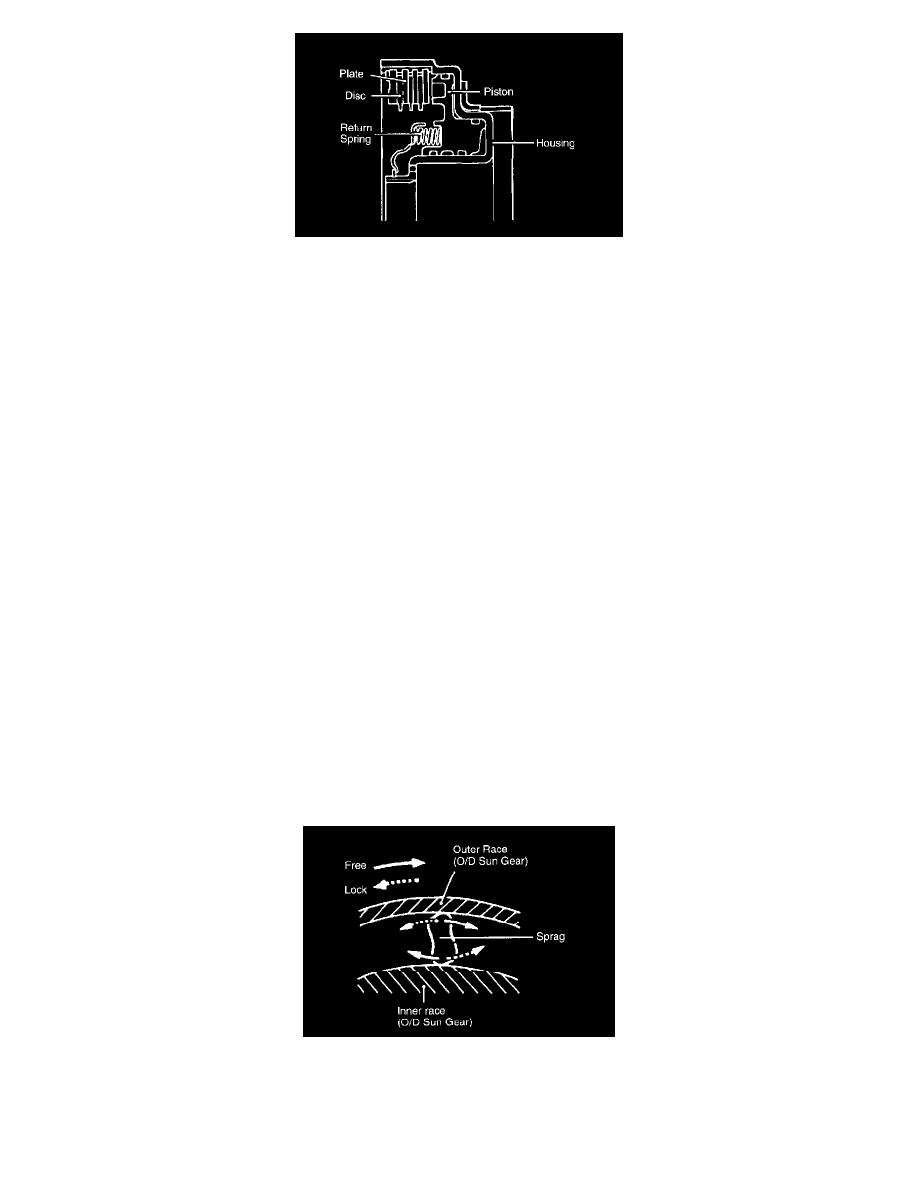Sportage 2WD 2Dr L4-2.0L (2002)

The direct clutch is applied in 3rd, 4th and reverse gears.
Pressure is applied to the direct clutch through the center support housing and center support seal rings. The piston is located in the bottom of the
direct clutch housing and held in position by return springs, a retainer and a snap ring. Fluid entering the underside of the forward clutch piston is
retained by four neoprene (rubber) C)-rings inside and outside of the piston. A single snap ring secures the plates and discs within the clutch housing.
Applying pressurized fluid to the piston forces it to move against the return springs and compresses the discs and plates to engage the clutch. The coil
(return) springs provide no mechanical advantage. The direct clutch discs are splined to the direct clutch hub. The plates are splined to the direct
clutch housing. The direct clutch housing is splined to the sun gear.
A specific clearance is required between the discs and plates to allow them to slip when not engaged. Excessive clearance indicates plate and/or disc
wear. Insufficient clearance indicates improper assembly or overhaul procedures.
In operation, the discs engage the plates, causing the direct clutch hub to drive the front and rear planetary sun gear. The direct clutch hub rotates with
the forward clutch housing at all times. When the forward clutch and the direct clutch are applied at the same time, direct drive results. If only the
direct clutch is applied, the forward clutch housing rotates but does not drive the intermediate shaft. A check ball in the piston traps pressure when the
piston is applied and allows residual pressure to escape after the piston is released.
One-Way Clutches
One-Way Clutches
A one-way clutch is a mechanical holding device that does not require hydraulic control. A one-way clutch consists of an inner and outer race, and
spring-loaded sprags (small oblong-shaped pieces of steel that are used like wedges).
A one-way clutch engages when the rotation of one or both of its races forces the sprags to tilt and wedge themselves between the races. This causes
both races to turn or hold together. The clutch disengages when the rotation of the race(s) changes to allow the sprags to tilt in the opposite direction.
This allows the races to turn or hold independently, allowing the access to overrun the sprags.
One-way clutches use a flange to indicate proper installation. This flange always faces the engine. Pay close attention to this during disassembly,
inspection and reassembly.
Overdrive One-Way Clutch
Overdrive One-Way Clutch
The overdrive one-way clutch prevents the overdrive sun gear and planetary carrier from rotating counter-clockwise.
The outer race is the overdrive carrier; the inner race is the overdrive sun gear.
When the overdrive sun gear is driven by the applied overdrive clutch, the sprags connect the overdrive sun gear and overdrive carrier. This supplies
